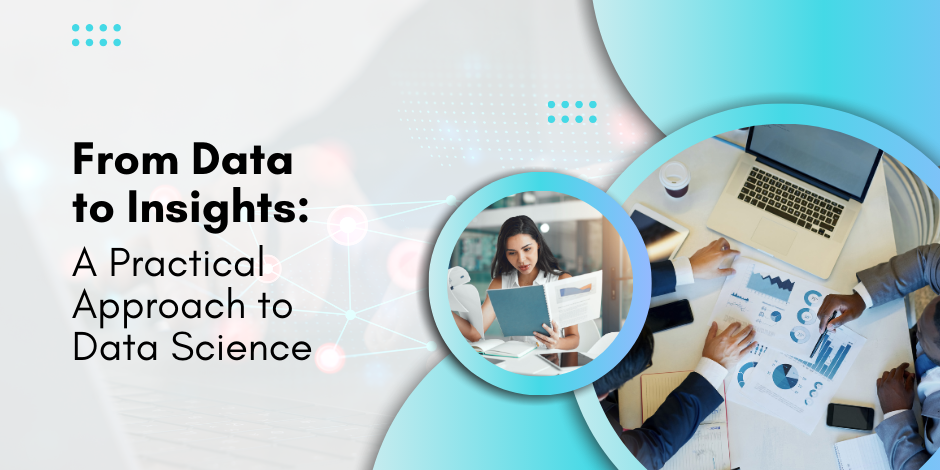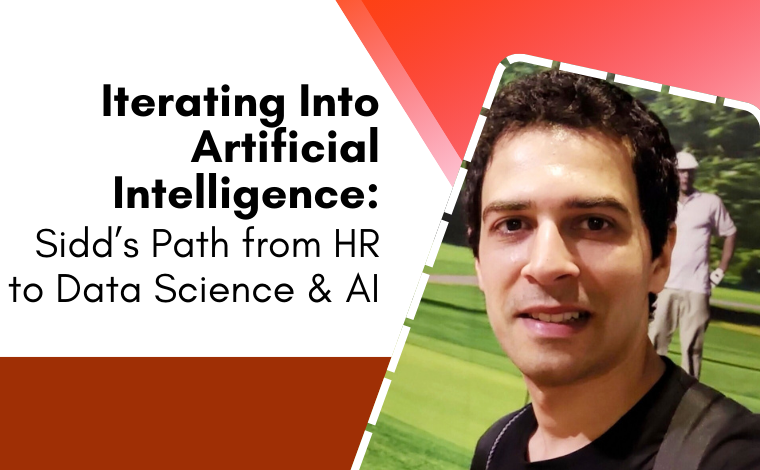From Data to Insights: A Practical Approach to Data Science

Stay Informed With Our Weekly Newsletter
Receive crucial updates on the ever-evolving landscape of technology and innovation.
The world of data science is vast and complex, with many techniques and tools available to transform raw data into valuable insights.
A practical approach to data science means understanding these tools and techniques, which are vital for any data scientist.
This guide aims to provide a map to navigate this landscape.
From data collection and cleaning to analysis and visualisation, each step in the data science process is crucial in deriving meaningful insights.
Delve into this guide for a practical approach to data science with advice and tips for data scientists at all levels.
Understanding data science

Data science is a multifunctional field that uses methods, algorithms, and processes to extract knowledge and illuminations from structured and unstructured data.
A practical approach to data science includes various stages, each crucial in transforming data into insights.
Data science is about using data to create as much impact for your company.
A practical approach to data science involves making predictions and decisions based on data, understanding the customer’s needs and behaviours, and providing actionable insights to the company.
From data to insights: the data science process
A practical approach to data science begins with data collection from various sources, such as databases, files, APIs, or web scraping.
The next step is data cleaning, where the data is cleaned and preprocessed to remove any errors or inconsistencies.
Once the data is clean, it’s time for data analysis.
A practical approach to data science involves exploring the data, looking for patterns, and using statistical methods to extract valuable insights.
The final step is data visualisation, where the insights are presented in a visual format that’s easy to understand and interpret.
Tools and techniques in data science
Data science involves many tools, from programming languages like R and Python to data analysis tools like structured query language (SQL) and machine learning (ML) libraries like TensorFlow and PyTorch.
Understanding these tools and how to use them effectively is a key part of the data science process.
For example, Python is a popular language for data science due to its simplicity and the wide range of libraries available for data analysis and ML.
On the other hand, SQL is used for querying and manipulating databases, while TensorFlow and PyTorch are used for building and training ML models.
A practical approach to data science: from data to insights

Now that we’ve covered the basics of data science let’s delve into the practical aspects. How do you go from data to insights in a real-world scenario?
This section will cover useful tips and strategies for each stage of the data science process.
Data collection and cleaning
Data collection is the first step in the data science process.
This involves gathering data from various sources, such as databases, files, application programming interfaces (APIs), or web scraping.
The key here is to collect relevant data to your problem or question.
Once you’ve collected your data, the next step is data cleaning.
A practical approach to data science involves preprocessing the data to remove errors or inconsistencies, such as missing values, duplicate entries, or incorrect data types.
This is a crucial step, as clean data is essential for accurate analysis and insights.
Data analysis and visualisation

Once your data is clean, it’s time for data analysis. This involves exploring the data, looking for patterns, and using statistical methods to extract valuable insights.
A practical approach to data science could include techniques like regression analysis, clustering, or machine learning.
The final step in the data science process is data visualisation, which involves presenting your insights in a visual format that is easy to understand and interpret.
This could include creating charts, graphs, or interactive dashboards using tools like Matplotlib, Seaborn, or Tableau.
Conclusion
From data to insights, the journey of data science is complex.
A practical approach to data science involves knowledge of the many tools and techniques, each crucial in transforming raw data into valuable insights.
This guide provides a practical approach to data science, whether you’re a seasoned data scientist or just starting out in the field.
From cleaning and data collection to analysis and visualisation, a practical approach to data science involves various steps crucial in deriving meaningful insights from data.
Want to enhance your data science prospects?
The Institute of Data’s Data Science & AI program provides a practical, hands-on curriculum taught by industry-experienced professionals.
Whether you’re new to tech or a seasoned professional looking for a change, we’ll prepare you for today’s competitive digital arena.
Ready to learn more about our programs? Contact our local team for a free career consultation.





